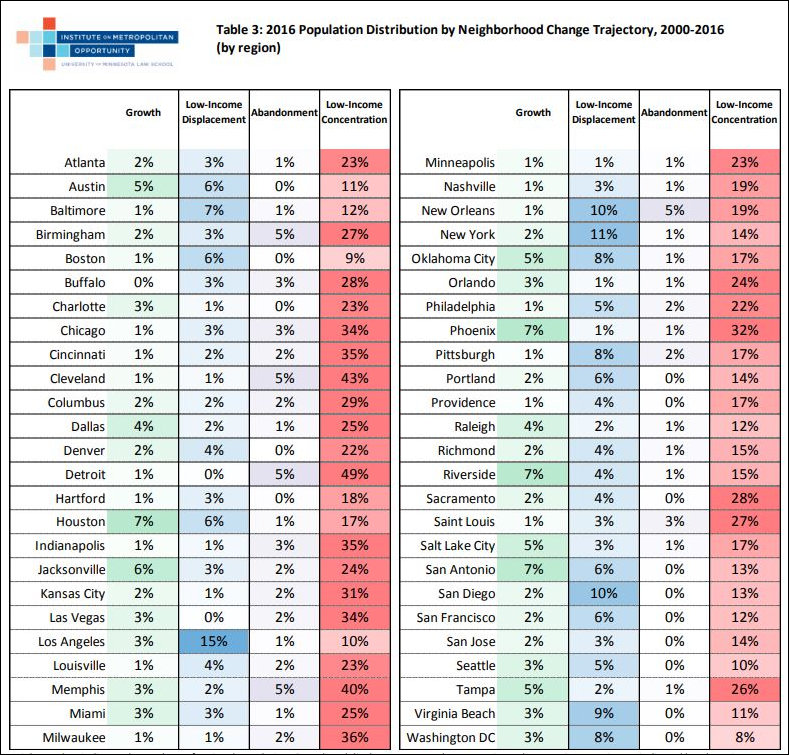Geek alert! The Institute of Metropolitan Opportunity, affiliated with the University of Minnesota Law School, has devised an interesting way to look at urban change at the neighborhood level in the nation’s 50 largest metropolitan areas. A new study, “American Neighborhood Change in the 21st Century,” examines census tracts to see if they fall into one of four categories:
Growth — economically expanding, with a growing low-income population.
Low-income displacement — economically expanding with a shrinking low-income population (gentrification)
Low-income concentration — economically declining with a growing low-income population
Abandonment — economically declining with a shrinking low-income population
Where change occurs — not all census tracts fall into one of these categories — the dominant pattern in U.S. metros between 2000 and 2016 was “low-income concentration” — census tracts that coupled economic decline with growth in low-income populations. For all the controversy it generates, low-income displacement, or gentrification, is far less common, although Washington, D.C., is one of two metros where gentrification is the dominant change pattern. Outright abandonment — envision Detroit — is relatively uncommon. Where the phenomenon occurs, it is concentrated in central cities.
As would surprise no one, Richmond is one of the metropolitan areas showing the least change of any kind!



